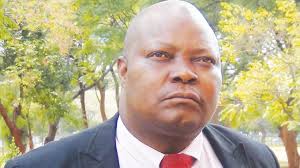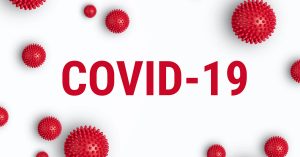Ed. note: This is the latest installment in a series of posts on motherhood in the legal profession, in partnership with our friends at MothersEsquire. Welcome Lauren Stiller Rikleen to our pages.
What a difference a few months and a global pandemic can make in thinking about the future of the legal profession and diversity. When approached earlier this year by MothersEsquire about writing this article, it seemed an opportune time to reflect on why inequalities remain in the legal profession.
As someone who has been working in, writing about, and consulting to this profession for decades, I welcomed the chance to analyze why the two key measures of success — compensation equality and achieving equity partnership — remained an intractable challenge for women and minorities. I wrote the piece, sent it off mid-February, and promptly got on a flight to speak at a bar leadership retreat. Now, all those activities feel like they were from another time.
Ironically, the earlier draft observed that the diversity data was reminiscent of the classic movie Groundhog Day in which Bill Murray lives the same day over over. I wrote that the part of Murray was instead played by the thousands of women and diverse attorneys who daily faced the unaddressed institutional impediments that thwarted their careers because the fix required difficult conversations about money and power that leaders have avoided.
The irony, of course, was that, within a few weeks of submitting the article, all of us were living a very real Groundhog Day drama of social isolation. The question now is whether, in today’s frighteningly altered world, these challenges still matter.
My answer remains a resounding yes. The landscape may have changed dramatically, but if ever there was a good time for difficult conversations, it is now, as we learn to rebuild a drastically altered work environment.
Key impediments to a diverse and inclusive culture have always included a management structure unwilling to holding leaders accountable for diversity and inclusion metrics, a failure to insist that everyone adhere to a culture of mutual respect, a failure to eliminate workplace misconduct, and an unwillingness to offer flexibility without stigma. Nothing about the insidious coronavirus has made this less important.
My original article expressed optimism that changing demographics would shift attitudes. I observed a growing activism among law students that demonstrated a willingness to use their voices more strategically and effectively than ever before. For example, students had protested against law firms that required summer associates and new lawyers to sign arbitration and nondisclosure agreements in the face of misconduct. Law students were avoiding judicial clerkships with newer judges whose appointments may have been based more on their social agenda than their legal qualifications. Law student activism even extended into efforts to boycott a global firm for its representation of an oil company alleged to have misled investors about climate change.
I also wrote that challenges long labeled as “women’s issues” now reflected the aspirations of both men and women who seek flexibility without stigma and technology without strangulation. I observed a possible link between how young families were structuring their lives at home and what they seek and expect once in the workplace.
The article recommended — as I have for decades — that firms redefine the vague but career-damaging concept of “commitment” as a measure of someone’s value at work. Too many years and careers have been lost to the false assumption that motherhood equates to a lack of commitment unless accompanied by inhumane demonstrations of devotion that have no relationship to one’s capabilities and desire to succeed.
The past months have supported how arcane that notion of commitment actually is. Men and women have both been home, balancing client demands and firm needs while unexpectedly home-schooling their children and checking on their parents. The personal and professional have merged in ways that could never have been imagined, yet nonetheless handled with grit and grace.
Law students and young lawyers are now immersed in an unprecedented world of fear and uncertainty. Can they dare hold onto the aspirations they had before COVID-19 crashed their world? Will firms become so immersed in the crisis that diversity and inclusion are seen as the well-meaning concerns of a bygone era?
My original conclusion still holds. The successful emergence from this merciless pandemic will require creative minds and a willingness to rethink every structural component of the workplace. In a world where the mightiest have been humbled, there has never been a greater need for the talented, creative thinking that can only come from a diverse, multigenerational talent pool.
The tight constraints of an inflexible culture must be abandoned to fight a common enemy and then rebuild. The virus that paralyzed us has also forced a reckoning.
Firms must compete for talent, and the talented will want to vet firm culture. Those with a reputation for respect and inclusion will hold a competitive advantage and a greater opportunity for institutional sustainability.
So, I remain optimistic that firms will respond to this grave challenge, take stock of their legacy, and create a better future for the profession. There really is no other choice.
 Lauren Stiller Rikleen, president of the Rikleen Institute for Strategic Leadership, speaks, trains, and consults on diversity, inclusion, strengthening multi-generational teams, and the creation of a respectful workplace culture. She is the author of the recently released book The Shield of Silence: How Power Perpetuates a Culture of Harassment and Bullying in the Workplace, as well as the author of You Raised Us, Now Work With Us: Millennials, Career Success, and Building Strong Workplace Teams. Her first book was Ending the Gauntlet: Removing Barriers to Women’s Success in the Law.
Lauren Stiller Rikleen, president of the Rikleen Institute for Strategic Leadership, speaks, trains, and consults on diversity, inclusion, strengthening multi-generational teams, and the creation of a respectful workplace culture. She is the author of the recently released book The Shield of Silence: How Power Perpetuates a Culture of Harassment and Bullying in the Workplace, as well as the author of You Raised Us, Now Work With Us: Millennials, Career Success, and Building Strong Workplace Teams. Her first book was Ending the Gauntlet: Removing Barriers to Women’s Success in the Law.
 Staci Zaretsky is a senior editor at Above the Law, where she’s worked since 2011. She’d love to hear from you, so please feel free to email her with any tips, questions, comments, or critiques. You can follow her on Twitter or connect with her on LinkedIn.
Staci Zaretsky is a senior editor at Above the Law, where she’s worked since 2011. She’d love to hear from you, so please feel free to email her with any tips, questions, comments, or critiques. You can follow her on Twitter or connect with her on LinkedIn.







 Kathryn Rubino is a Senior Editor at Above the Law, and host of
Kathryn Rubino is a Senior Editor at Above the Law, and host of 





